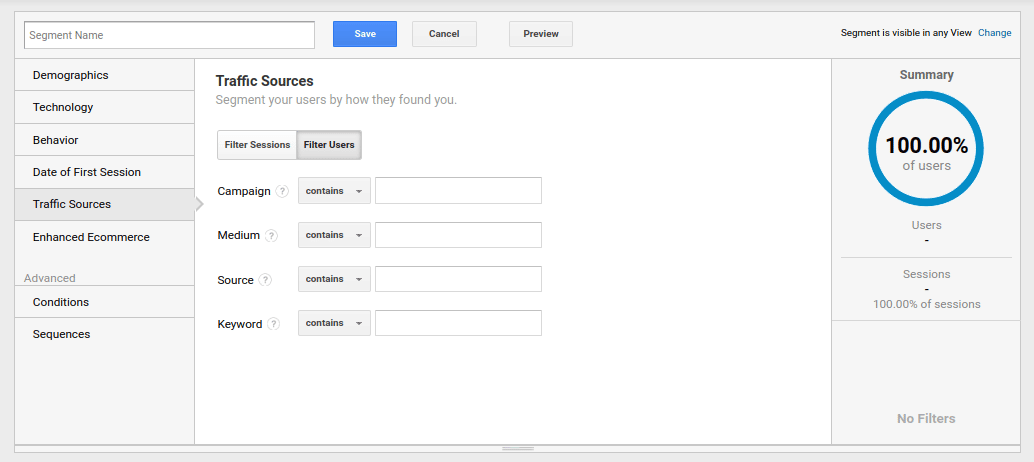Trick Functions of Remarketing In Google Analytics Explained
Efficient Strategies for Remarketing in Google Analytics
With critical audience segmentation, tailored remarketing listings, and interesting advertisement creatives, organizations can craft personalized campaigns that reverberate with their target audience. By checking out the subtleties of dynamic remarketing and leveraging sophisticated monitoring tools, services can open the full potential of their remarketing efforts, leading to boosted brand name visibility and consumer involvement.
Audience Segmentation
Utilizing audience segmentation is a pivotal technique in enhancing the performance of remarketing projects within Google Analytics. By separating your target market right into distinctive teams based on their habits, demographics, or rate of interests, you can tailor your advertising messages to be a lot more appropriate and appealing. This technique permits you to provide individualized advertisements to certain sections, enhancing the possibility of conversion.

Furthermore, target market segmentation aids you comprehend the varying needs and choices of different customer groups, allowing you to craft more engaging advertisement creatives and deals. This targeted technique not just enhances the performance of your remarketing efforts but likewise improves overall project efficiency.
Establishing Up Remarketing Lists
To efficiently execute remarketing techniques in Google Analytics, the preliminary action entails creating targeted remarketing checklists based upon particular audience interactions. Establishing remarketing listings allows marketing professionals to sector their site visitors right into different classifications based on their habits, such as pages seen, items looked for, or activities taken on the site. By defining these sections, marketers can then create relevant and customized ads that target these certain teams, boosting the chance of conversion.
Remarketing checklists can be set up utilizing numerous criteria such as page visits, duration of see, specific goal completions, or perhaps particular occasions activated on the site. This level of personalization enables marketing experts to customize their advertisements to match the passions and choices of each segmented target market, leading to greater interaction and conversion prices.
Furthermore, remarketing lists can likewise be developed based upon data imported from other sources like CRM systems, enabling also more precise targeting. By establishing these targeted remarketing listings, marketing professionals can efficiently connect to possible clients who have already revealed interest in their items or solutions, taking full advantage of the effect of their remarketing campaigns.
Producing Compelling Ad Creatives
After segmenting web site visitors right into targeted remarketing listings based upon certain audience interactions, the following critical action is to craft engaging ad creatives that reverberate with each fractional team's preferences and interests. The effectiveness of remarketing projects heavily depends on the ability of these ad creatives to record the attention of the target market and drive them to take the wanted activity.
To create engaging advertisement creatives, it is necessary to understand the special features of each fractional team (What Is “Remarketing” In Google Analytics?). Tailoring the messaging, visuals, and provides to line up with the rate of interests and preferences of the audience can significantly raise the chances of conversion. Making use of dynamic ads that instantly readjust material based on the user's actions can additionally improve the personalization of the ad experience

Monitoring Performance and Optimization
Effective surveillance of project efficiency and continuous optimization are vital elements of effective remarketing strategies in Google Analytics. To guarantee the performance of remarketing campaigns, marketing professionals need to on a regular basis track crucial performance metrics such as click-through prices, conversion rates, and return on advertisement spend. By keeping track of these metrics, marketers can obtain useful insights right into the performance of their campaigns and determine locations for improvement.
In Google Analytics, marketers can utilize tools blog here like conversion monitoring and audience division to examine the performance of their remarketing projects. Conversion tracking enables marketers to track certain activities that customers take after clicking a remarketing advertisement, providing useful data on the efficiency of the campaign in driving preferred end results. Target market segmentation, on the various other hand, allows marketers to separate their audience right into various sections based on numerous requirements such as demographics, behavior, and interests, enabling even more targeted and individualized remarketing efforts.
Continuous optimization is essential for maximizing the effect of remarketing projects. Marketing professionals ought to make use of A/B testing to trying out various ad creatives, messaging, and targeting methods to recognize the most effective methods. By on a regular basis evaluating campaign efficiency data and making data-driven optimizations, online marketers can make certain that their remarketing projects are achieving the preferred outcomes and driving conversions properly.
Leveraging Dynamic Remarketing
Utilizing dynamic remarketing can dramatically improve the significance and impact of targeted ads in Google Analytics. This advanced method enables marketers to show individualized advertisements to individuals who have previously visited their site or used explanation their mobile application. By dynamically showing products or solutions that the customers have shown interest in, dynamic remarketing helps to maintain the brand name fresh in their minds and motivates them to return to complete a purchase.

In addition, dynamic remarketing campaigns can be automated and enhanced in real-time based upon performance data, guaranteeing that the ads continue to be relevant and effective. By leveraging vibrant remarketing in Google Analytics, advertisers can produce a lot more impactful and targeted marketing campaign that reverberate with their audience and drive outcomes.
Verdict
Finally, effective remarketing methods in Google Analytics entail audience segmentation, targeted remarketing listings, compelling advertisement creatives, performance Learn More Here tracking, and dynamic remarketing. By concentrating on tailored ads, data evaluation, and continual optimization, services can boost conversion prices and drive involvement effectively. Leveraging tools like conversion monitoring makes sure that advertisements continue to be appropriate and customized, resulting in overall success in remarketing efforts.
Through critical audience segmentation, customized remarketing checklists, and engaging advertisement creatives, companies can craft tailored campaigns that resonate with their target audience. Making use of vibrant advertisements that automatically change material based on the customer's actions can also enhance the personalization of the ad experience.
Conversion tracking allows marketers to track specific actions that users take after clicking on a remarketing advertisement, giving useful information on the efficiency of the campaign in driving preferred end results.Making use of dynamic remarketing can significantly improve the importance and effect of targeted ads in Google Analytics - What Is “Remarketing” In Google Analytics?.In conclusion, reliable remarketing strategies in Google Analytics include audience division, targeted remarketing lists, engaging advertisement creatives, performance monitoring, and dynamic remarketing